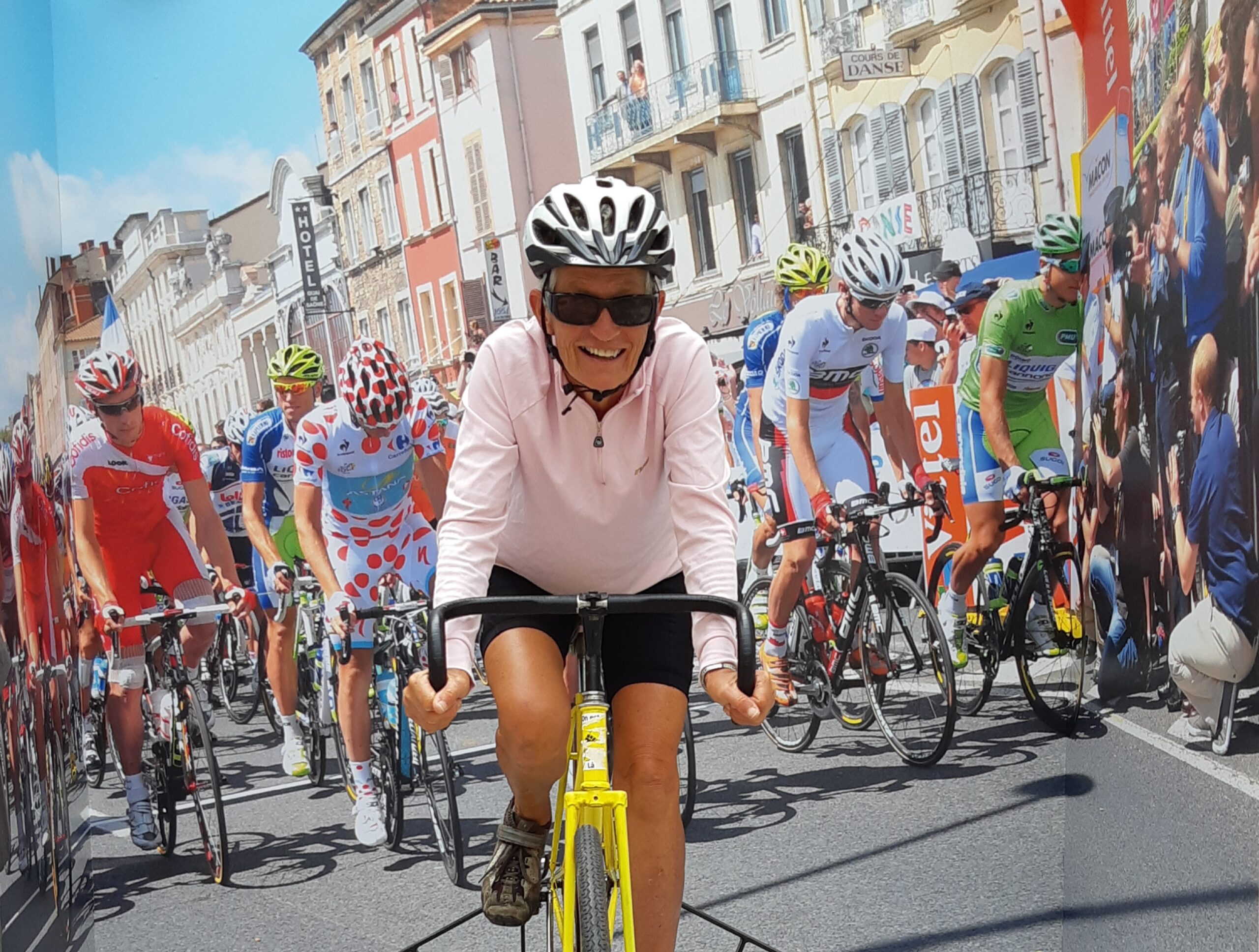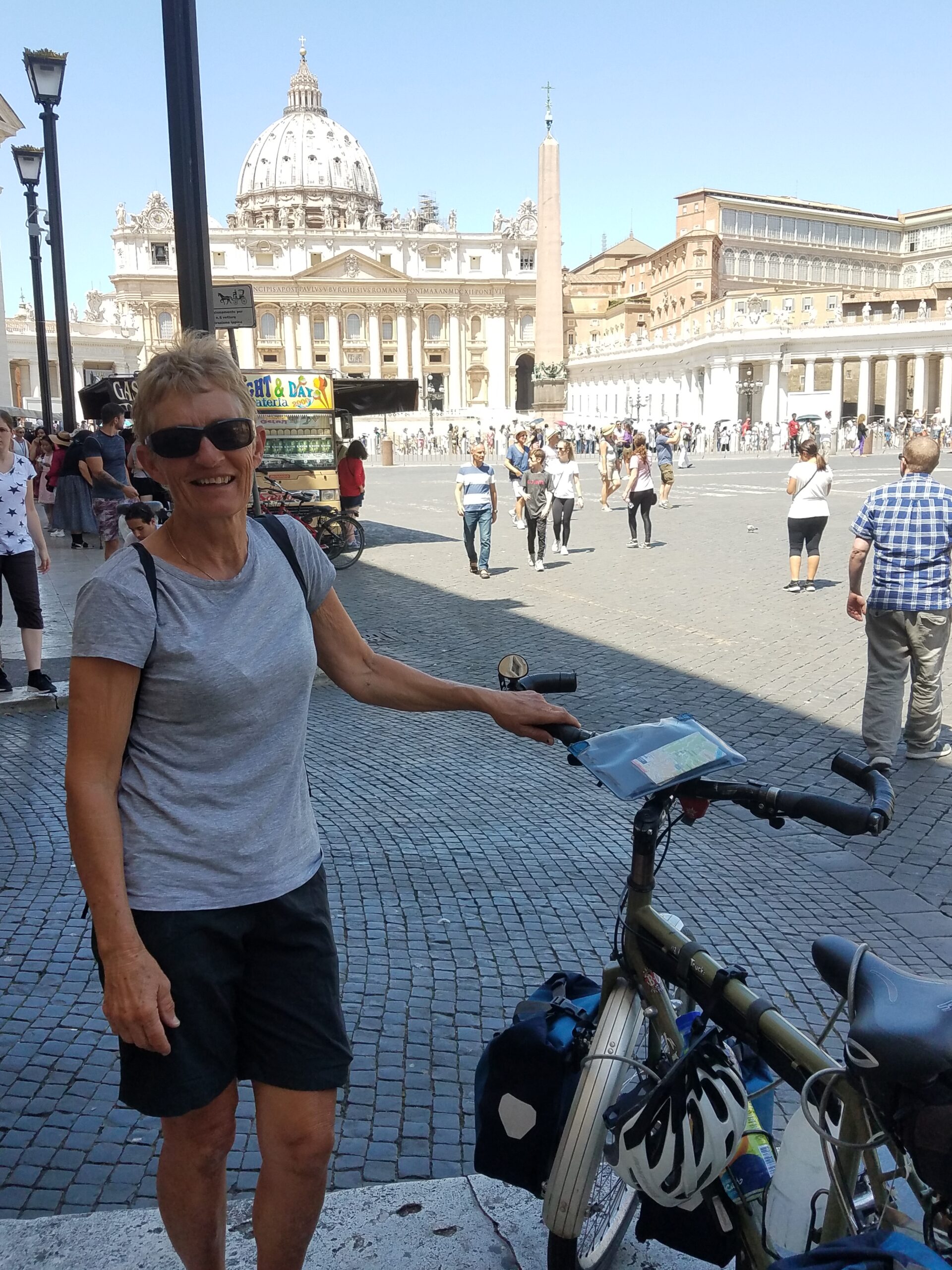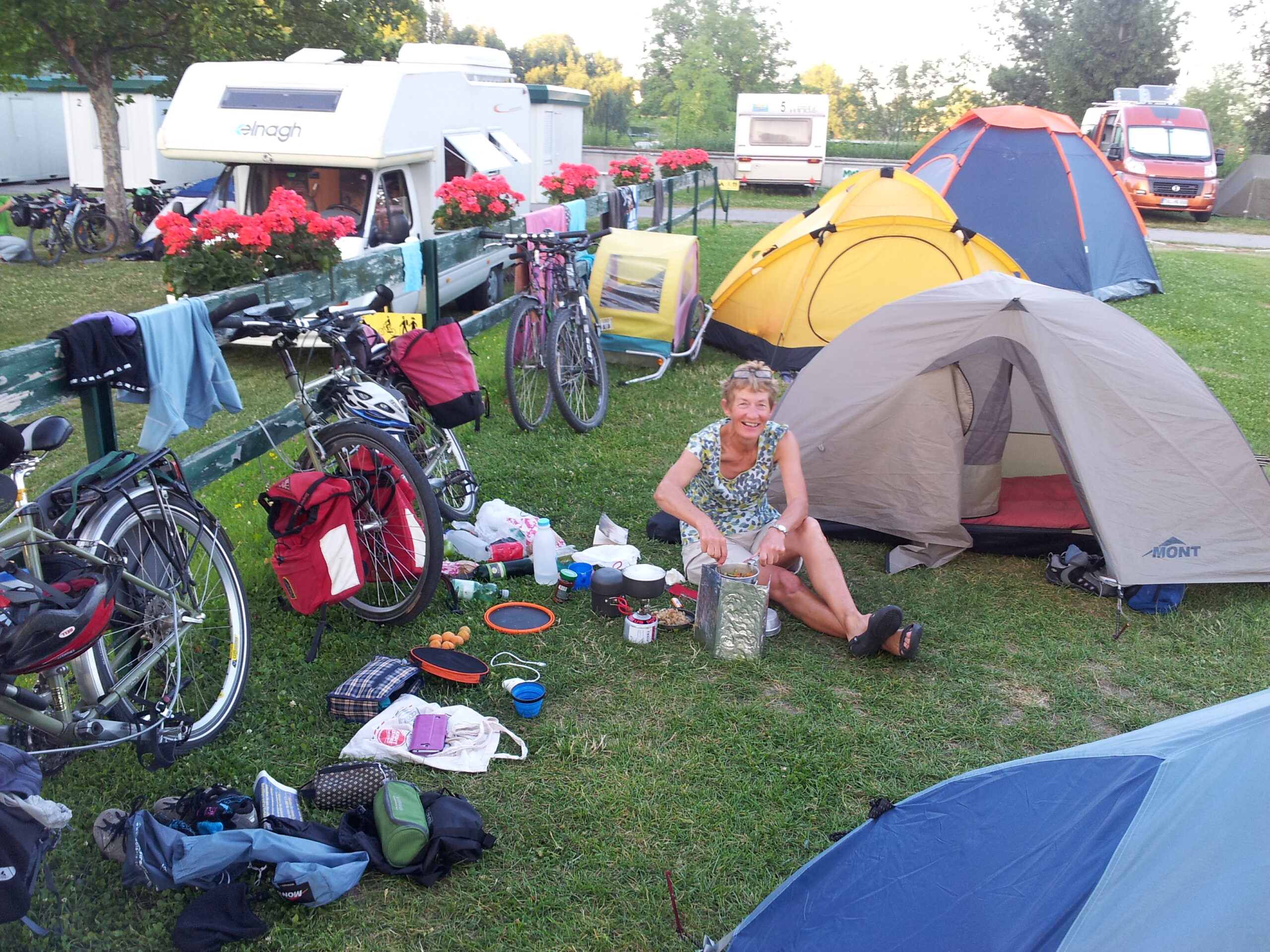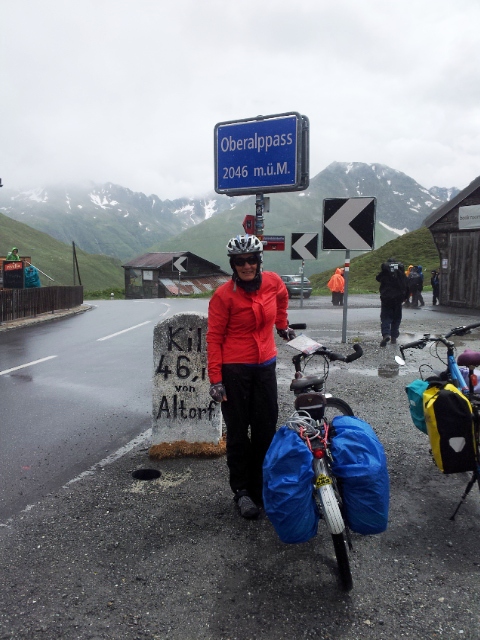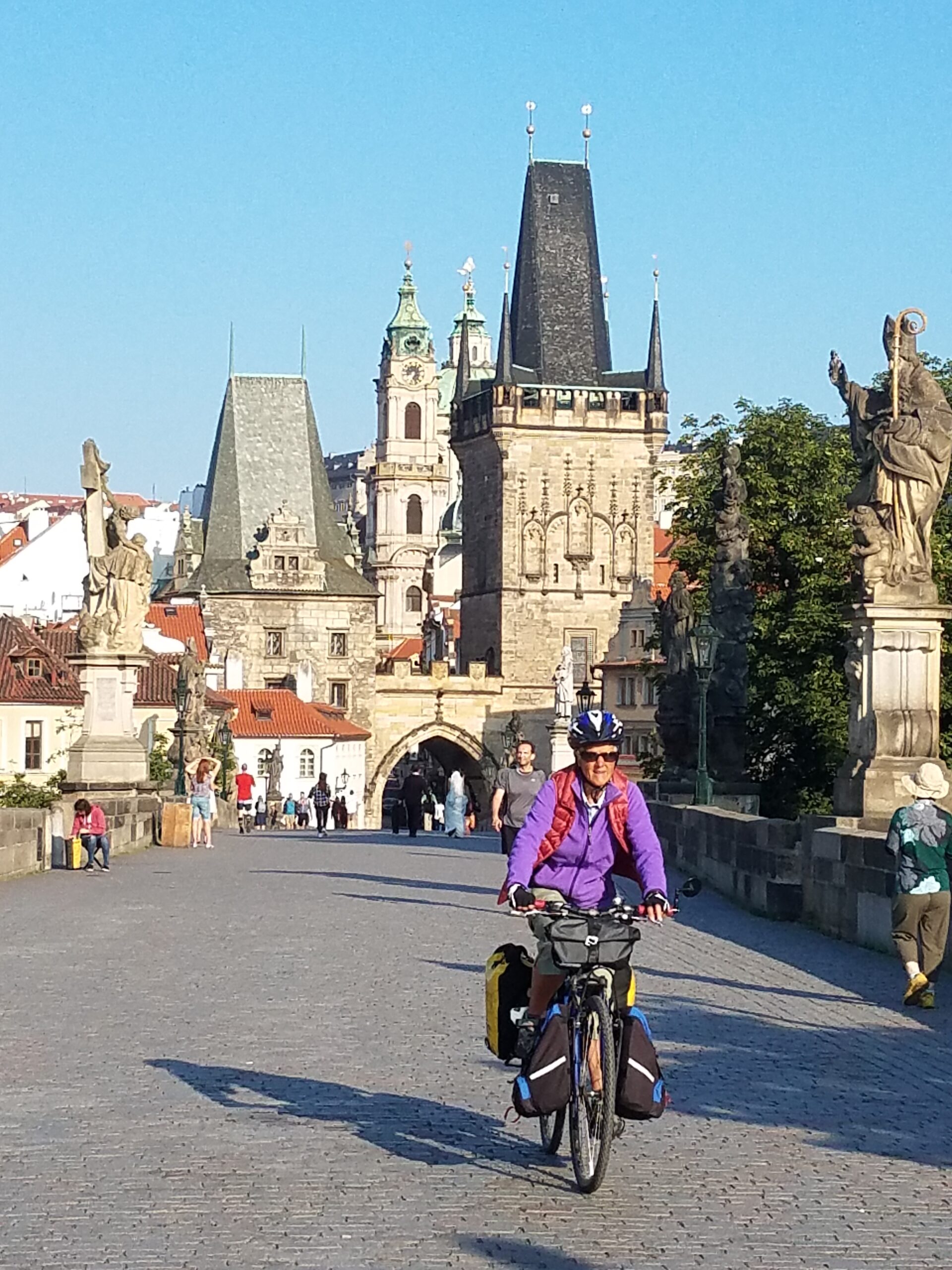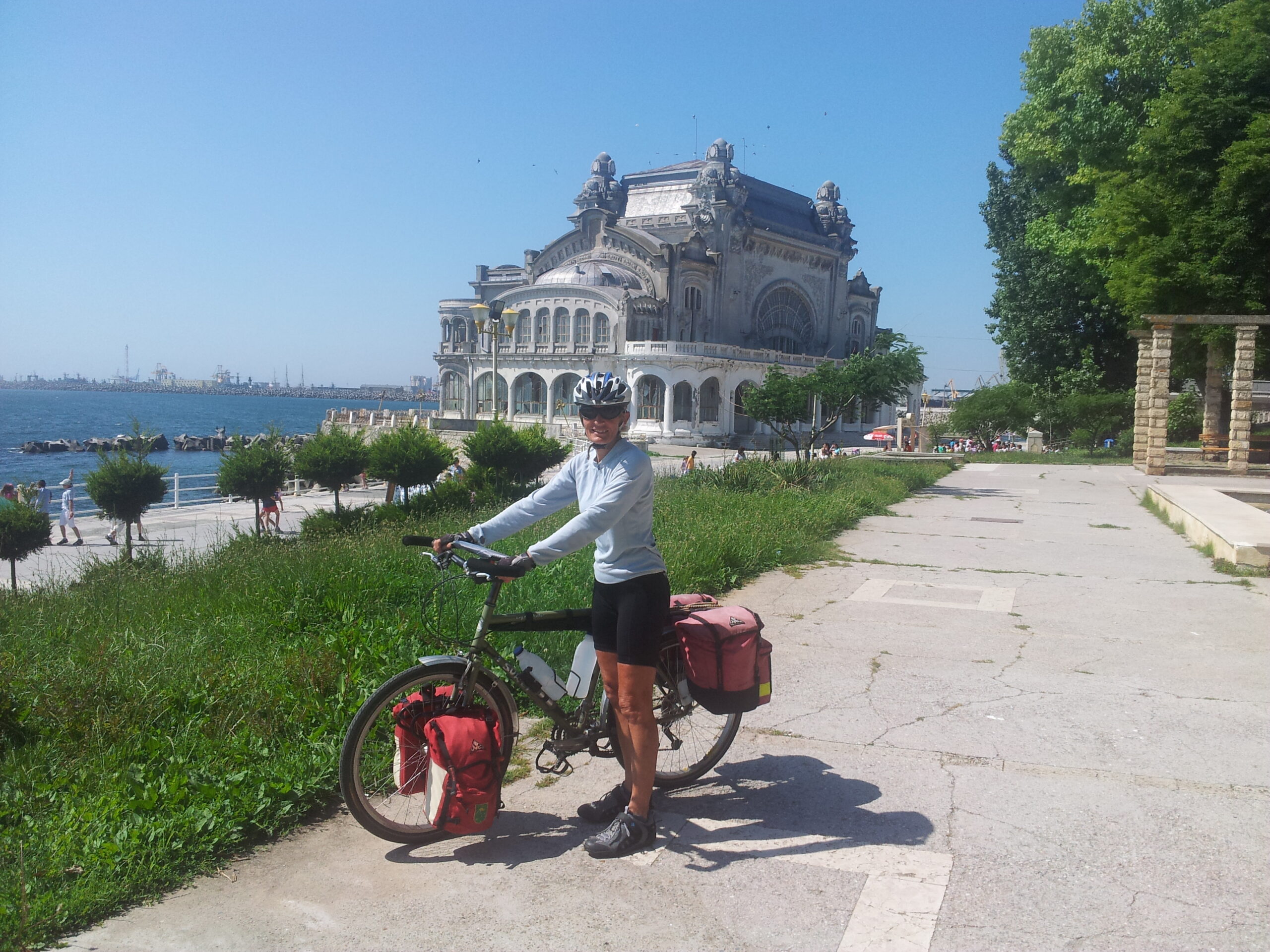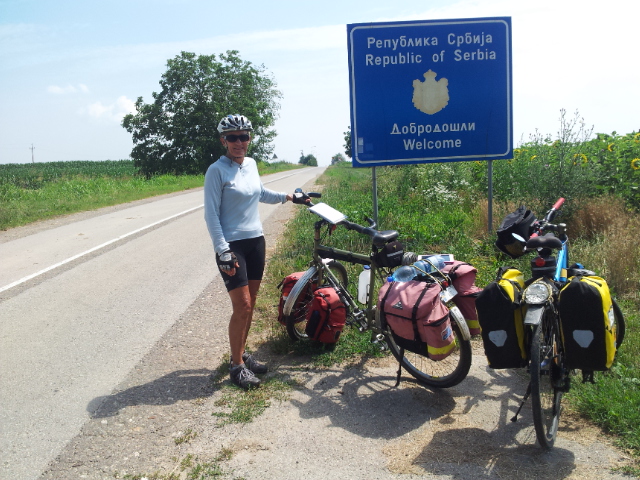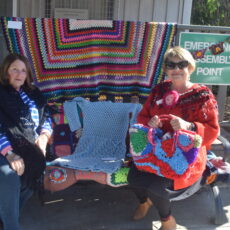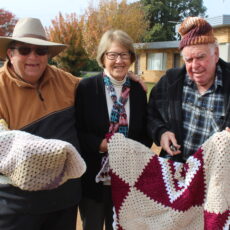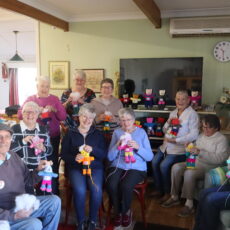By Kay Durham
I can’t remember a time when I wasn’t riding a bike.
Growing up on a sheep and wheat farm in the Riverina, my siblings and I always had old bikes to race around the farm tracks on and to explore the back paddocks.
My first bike adventure would have been when I was about 11-years-old.
I was allowed to cycle over to a school friend’s farm on the district roads and stay overnight.
It must have been all of 10 kms but I thought it a great adventure and it gave me a taste at an early age of what could be possible.
The first bike I bought with my own money was when I went to Teachers College in Wagga.
It was second hand and I painted it red with flowers all over it.
It was very useful in getting me around the city on a student income.
While teaching in the 80s a group of friends and I would go on long day trips on the weekends cycling up into the hills around Tamworth.
However, it wasn’t until three of us did a three-week tour of Tasmania in 1981 that I realised what I could do with a bike and a tent.
So, in 1985 I spread my wings and took a year’s sabbatical.
I flew to North America with my bike, panniers and camping gear and cycled solo from the Gulf Islands in Canada (Vancouver, Saltspring), through the San Juan Islands and down the West Coast of the USA.
The ferry service through the islands was wonderful.
I took in Washington State, Oregon and California, riding through San Francisco and Los Angeles on the way down to Tijuana in Mexico.
I camped nearly all the way.
You could really only cycle from north to south as otherwise, the headwinds would have been soul-destroying.
A six-week trip with a friend followed in 1987.
We cycled from Bombay, as it was then called, down the western coast of India to the tip of the subcontinent and up onto the Deccan Plateau.
Two women on bikes caused a lot of attention, particularly the bikes!
At that stage India hadn’t opened up to the world economy so no western goods were being imported.
The locals all rode big black clunky Hero bikes.
In a cycling nation like India, our shiny colourful bikes attracted huge crowds.
We would always know where they were if we left them to go sightseeing.
There they’d be, in the middle of a big scrum of admiring men fiddling with the gears and flicking the tyres.
On that trip camping wasn’t an option and we stayed in local down-country hotels in the towns and Dak bungalows in the National Parks.
In the following 20 years I took up travelling and trekking in South East Asia, the Himalayas, Sri Lanka and South America and tramping in New Zealand.
There was also bushwalking in the Australian Alps, Tasmania, Kakadu, Central Australia, the Kimberley and, of course, in our own Mount Kaputar National Park.
I got back into long distance cycle touring in 2008 after I’d retired from teaching with a nine-week trip with a friend through Indo China.
We flew in to Siem Reap near Angkor Wat and peddled through Cambodia, Vietnam and Laos and finished in Chiang Mai in northern Thailand.
The traffic was frenetic on Highway One in Vietnam with an almost constant sound of blasting truck horns in our ears.
Practically no English was spoken away from the major cities, but you manage.
I can still remember cycling into Saigon/Ho Chi Minh City, not knowing exactly where we were, and hitting the first big roundabout with countless lanes of traffic circulating around it in seeming chaos.
They require nerves of steel to negotiate, and a good deal of bravado.
In 2012 I decided it was time I reacquainted myself with Europe, not visited since a year of travel in 1973 which began with an overland trip from Kathmandu to Athens.
The king was still on his throne in Afghanistan, the Shah still in power in Iran and Islamist terrorism yet to appear.
How things have changed.
For my first European cycle tour I decided to first tackle the Danube River Valley, the longest in Europe after the Volga.
I began at its source in the Black Forest of Germany, through Austria, Slovakia, Hungary, Croatia, Serbia and Romania to the Black Sea; a solo journey of 3000 km over six weeks, much of it on poorly maintained roads.
The toughest section was the last through the remote villages and farmlands of southern Romania, where livestock is still driven out from the villages by shepherds each morning and brought back into the fold each evening.
Shops and camping sites were few and far between and food not easy to come by.
On a couple of nights I had to camp unseen in the forest.
Each northern summer, for the next seven years, I plotted new routes throughout Europe, mainly following river valleys, canals, rail trails and pilgrimage routes.
The Rhine, Elbe, Danube, Main, Moselle, Saône, Loire, Dordogne and Lot Rivers were all explored.
The Great Hungarian Plain around Hortobágy in Eastern Hungary, with its unique domestic animals, was extremely interesting along with the crumbling Art Deco architecture of western
Romanian towns and the fortified churches of Transylvania.
Pilgrimage routes cover Europe like a spider’s web.
They were established in the Middle Ages with usually a religious shrine as a destination.
I cycled the St James route from Amsterdam and Haarlem through the Netherlands, Belgium, France, over the Pyrenees into Spain and onto Santiago de Compostela.
I finished the trip in Lisbon on the Portuguese Camino.
One of the most spectacular sections was the 220 kms over the Meseta, the high-altitude plateau of central Spain with its big skies, empty landscapes, and long distances between towns – a bit like inland Australia.
It was daunting for many European pilgrims, but I felt quite at home.
The little isolated stone villages with their plain rustic churches and cobbled lanes were beautiful.
Also, the hand painted blue and white tiles decorating the facades of the Porto churches in Portugal were a revelation.
Two years later I cycled the Via Francigena from London to Rome via Canterbury, France, Switzerland and over the Alps to Rome.
The Grand St Bernard Pass at nearly 2500m altitude above sea level, was a tough day but the weather was glorious and the wildflowers, meadows and mountain streams were stunning, to say nothing of the view from the top.
After Rome I cycled back up north through Assisi, Perugia and Florence to Bologna where I had my bike stolen the day before I was to fly home.
The only plus was I didn’t have to wrangle a bike onto the plane for the flight back to Sydney, always a pain at the end of every cycle trip.
Some of these six to ten week trips were solo and some were with a friend, camping nearly all the way and clocking up to 3500 km each time.
After doing a rough tally of all my extended trips since 1981 I was surprised to find I’d cycled over 32,000 km.
It certainly keeps you fit.
I have to admit, the trickiest part is preparing the bike for transport on the international flights.
My bike has to be broken down, boxed and then put back together again in a foreign airport luggage hall, while at the same time keeping track of all my camping gear and valuables.
And then there was the matter of a couple of stolen bikes!
What I find most enjoyable on these trips is cycling through unspoilt villages and countryside and then slipping into the heart of cities like Paris, Berlin, Amsterdam, Prague, Vienna, Budapest, Rome and Florence.
To sample the wonderful art galleries, museums, ancient cathedrals, music concerts and summer festivals of these iconic cities is unsurpassable – and of course enjoying the food and wine.
But now, of course, I have had to put my touring plans on hold, as has everyone else.
I’m dreaming of my next overseas cycle trip, though.
It’s always good to have a plan.
Read more stories like this:
- Cycle, walk and soon, sit, on the new Creek path
- Travellers take flight as COVID-19 bans are lifted
- It’s not a motorbike, not a chopper, it’s a gyrocopter


